Readers further interested in these topics may also wish to consult the following resources:
- Military History and Armies of the Scythians and Sarmatians
- Military History and Armies of the Achaemenids
Kindly note that the version printed below contains images and captions that do not appear in the original Encyclopedia Iranica article.
= = = = = = = = = = = = = = = = = = = = = = = = = = = = = = = = = = = = = = = = = = = = = = =
Arrows came in use along with the bow, and the two developed in parallel. In the Bronze Age in eastern Iran, metal arrowheads of bronze were widespread, while skillfully made stone arrowheads, inherited from the earlier period, remained in use. By the turn of the first millennium BCE, bronze arrowheads became the only type used in the area; early in the second half of the same millennium, iron arrowheads appeared. Very soon they became predominant, and, in the 2nd century BCE, were the only type of arrowheads in use.
Avestan uses the words ar$ zaži-, išu-, and ašti- to denote an arrow. One of the expressions in Yt. 10.39 suggests that arrows might have been fletched with eagle feathers (Malandra, pp. 269, 271). In Middle Persian, the word tigr/tīr stood for “arrow” (Tafazzoli, p. 193). Sogdian and other east-Iranian languages used a specialized terminology to describe arrows.
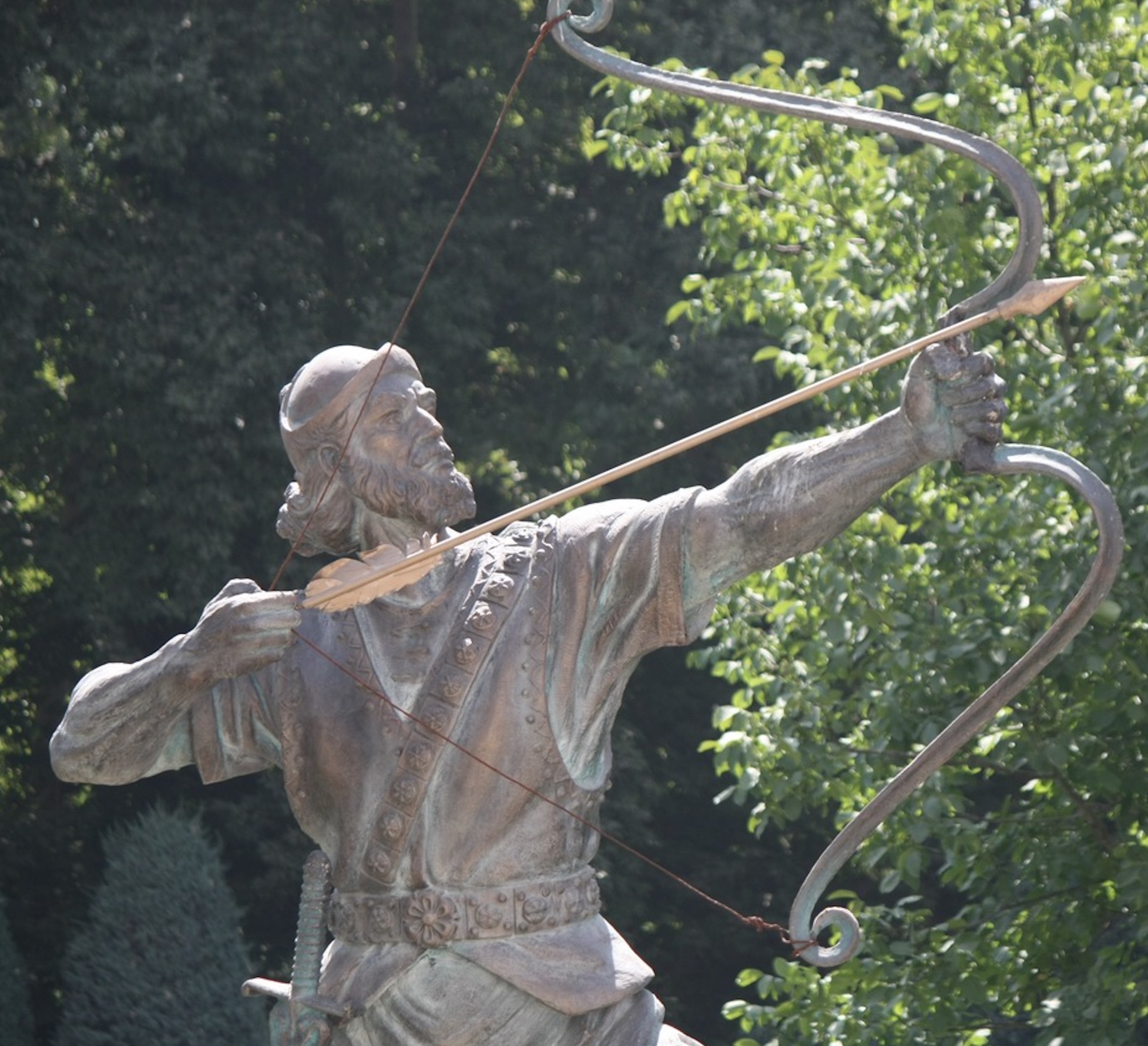
Statue of the legendary archer of ancient Iran, Arash-Kamangir -آرش کمانگیر- (Arash the Archer/Arash the Bow-grasper) at Sa’abad Place in Tehran, Iran (Source: w:fa:Wooerfara3661 in Public Domain). “Erekhsha” in the (Old Iranian) Avestan texts is described as he “of the rapid arrow, having the most rapid arrow among the Iranians” (Yasht VIII, 6). “Erash” was the (later) Pahlavi (Middle Iranian) term for Erekhsha.
Seemingly simple, the manufacture of arrows and, to an even greater extent, arrowheads required a lot of skill. Experiments and mathematical calculations show that lighter arrows could travel farther if not for drag by air. Because of drag, however, an arrow needs a certain, though not large, mass to accumulate energy, so that the loss of speed created by drag is minimized. In fact, bows and arrows must match each other: larger or smaller mass shortens the distance the arrow covers. The weight ratio between the shaft and the head, the position of the center of gravity, and the feathering should be taken into account so that the best possible aerodynamic qualities are achieved. Different arrow types were intended for different purposes. Obviously, the arrow-makers of antiquity did not bother with aerodynamic calculations, and followed rules based on experience (Klopsteg, pp. 148-49; Litvinsky, 2001, pp. 54-55).
In eastern Iran, fletched and unfletched arrows with and without feathering were in use. A feathered shaft can be discerned on the obverse of coins, issued by Apollodotus ;I (r. ca. 180-160 BCE) and showing Apollo with an arrow (Smith, p. 20, pl. IV, nos. 9-10; Whitehead, 1914, p. 43, pl. IV, no. 307). The end of arrows that appear on other coins, issued by the same ruler, have nocks for bowstrings (Bopearachchi and Rahman, p. 102, no. 209). On some coins the butt is crescent-shaped (Mitchiner, p. 118, type 209). The reverse of a coin, issued by Spaliris (r. ca. 65-40 BCE), clearly shows the end of an arrow at a Scythian-type bow. This end is split and flechted (Whitehead, 1914, p. 144, pl. XIV, no. 396).
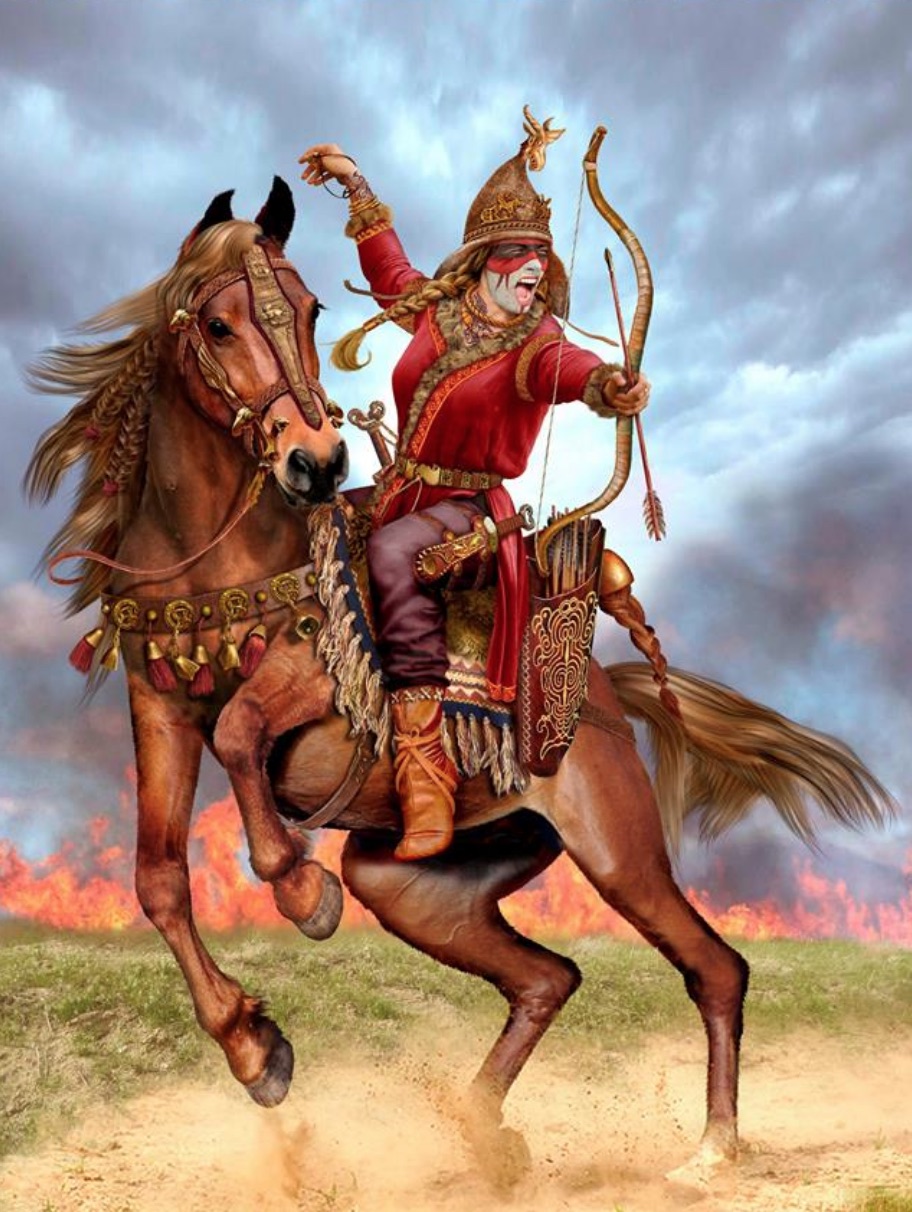
Female Scythian horse archer (Source: Osinform). The Sarmatians who succeeded the Scythians on the steppes and the Ukraine region were similar to their cousins in Persia where Romans made references to female fighters in the Sassanian army for example. Weapons have also found to be buried in the graves of Parthian females in northern Iran – for more see:
- Farrokh, K., & Karamian, Gh. (2018). Weapons in the tombs of Parthian Era Women in Northern Iran: A Preliminary Report. Fezana Journal (Publication of the Federation of Zoroastrian Associations of North America), Vol. 32, No.3, Fall/September, pp. 18-21. – For more on the weapons found in the graves of Parthian women fighters in the graves at Vestmin consult pages 67-68 in: Karamian, Gh., Farrokh, K., Kiapi, M.F., Nemati, H. (2018). Graves, crypts and Parthian weapons excavated from the gravesites of Vestemin. HISTORIA I SWIAT, No.7, pp. 35-70.
The shafts of the arrows used by the Sakas of the Pamir had a length of 80 cm and a diameter of about 0.5 cm. The arrows from Chil’khona (Čehelḵāna), the late Saka burial (Collections of the A. Donish Institute of History, Dushanbe), have a notch along their backs on their shafts. Their diameter increases from 0.5 to 0.7 cm along the first 14 cm of the lower part of the shaft; its upper part was cylindrical.
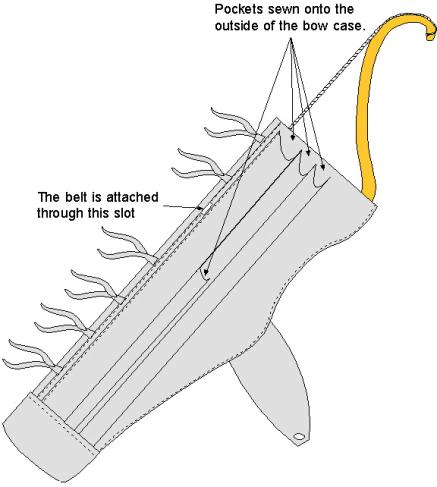
Drawing by Stephen Selby of a gorytos of the Eastern type typical of the Saka in ancient Eastern Iran and Central Asia (Source: Article by Bede Dwyer: SCYTHIAN-STYLE BOWS DISCOVERED IN XINJIANG: From the photographs and drawings of Stephen Selby).
Arrow shafts that were found intact in the Karabulak burial ground are dated to the first centuries CE. They have a length of about 80 cm long and a diameter of 0.7-0.8 cm. Their front part is more slender than their ends, which have nocks for bowstrings. The shafts are decorated with red and black stripes.
A collection of arrows was found at a castle on the Mug Mountain (7th-early 8th centuries CE). All have a length of about 90 cm and a diameter of 0.7-1.2 cm. Some were made of reed, or of reed combined with wood. The shaft’s front part consisted of wood with iron heads fitted upon them. Fibers were wound around the shafts, and the reed and wood parts were joined in the same manner. The wound end of the reed part had nocks for the bowstring, while the fletching consisted of four to six feathers. The arrows were decorated with stripes, dots, and rhombuses (Litvinsky, 2001, pp. 116-18). One of the Sogdian documents from the Mug Mountain provides information about 250 combined arrows (Livshits, p. 155).
The arrowhead is the arrow’s most important element. Between the 7th and 3rd centuries BCE in eastern Iran, as well as on the Eurasian steppe, only bronze arrowheads were used. The earliest are dated to the 7th and 6th centuries BCE. They had bushes and double-bladed heads with rhomboid or pyramidal tips, which were sometimes barbed. Three-edged and three-bladed bronze heads appeared at the same time. By the 5th century BCE, they had completely replaced the two-bladed ones. The bush went beyond the arrowhead itself and could be either deep or shallow. There were bushes completely hidden inside, called inner or hidden bushes.
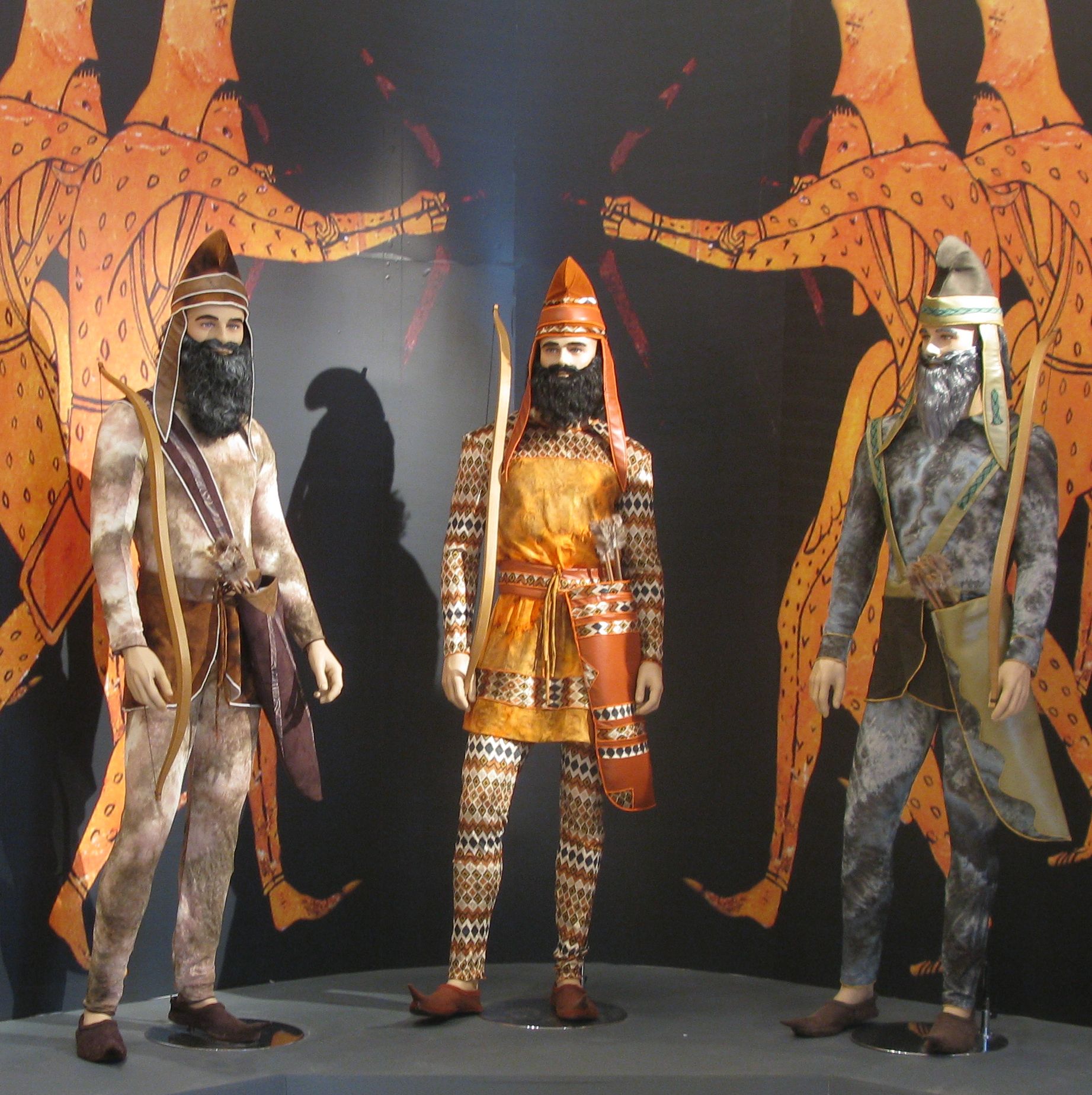
Exhibit of Achaemenid archers (Image Source: Ancient Origins) … For more see here …
Iron arrowheads appeared as early as the 6th century BCE, yet, for a long time, their use remained limited because each warrior needed a large number of arrows. Some of the Scythian quivers contained up to 200 arrows, and sometimes warriors had several such sets. It was much easier to mould bronze arrowheads than to hammer iron ones. Thus, the large number of needed arrows prevented the spread of iron arrowheads. But their obvious superiority in battle slowly led to their massive production between the 3rd and 2nd centuries BCE, and between the 2nd and 1st centuries BCE, they completely replaced bronze arrowheads in eastern Iran.
The earlier iron arrowheads from the Saka burials of the eastern Pamir (5th-3rd centuries BCE) can be described as double-bladed bushed and three-bladed bushed (Litvinsky, 1972, pp. 101-4). A set of iron arrowheads dated to the mid-2nd century BCE were found in the Āy Ḵānom arsenal. The set includes one double-bladed and bushed arrowhead; one shafted (also called needled) and double-bladed; twenty-seven shafted and three-edged; as well as six shafted and four-edged (Grenet, Liger, and Valence, pp. 56-58, pl. XXII). Later, even more types of iron arrowheads appeared, but most were shafted because it is much harder to make bushed arrowheads. Three-bladed arrowheads had three-edged, leaf-shaped, rhomboid, or figured heads. Many of them were also barbed; and the size of arrowheads varied. There were also shafted three- and four-bladed arrowheads, flat in cross-section and with conic or bullet-shaped heads. In antiquity and the Middle Ages, bushed arrowheads were used. In the Šāh-nāma Bahrām Gur hunts with arrowheads tipped with crescents or two barbs (Girs, pp. 357-61; Litvinsky, 2001, pp. 80-116). Wood and bone arrowheads and harpoons were occasionally used along with bronze and iron ones, though mainly for hunting and fishing (Litvinsky, 1972, pp. 105-7).
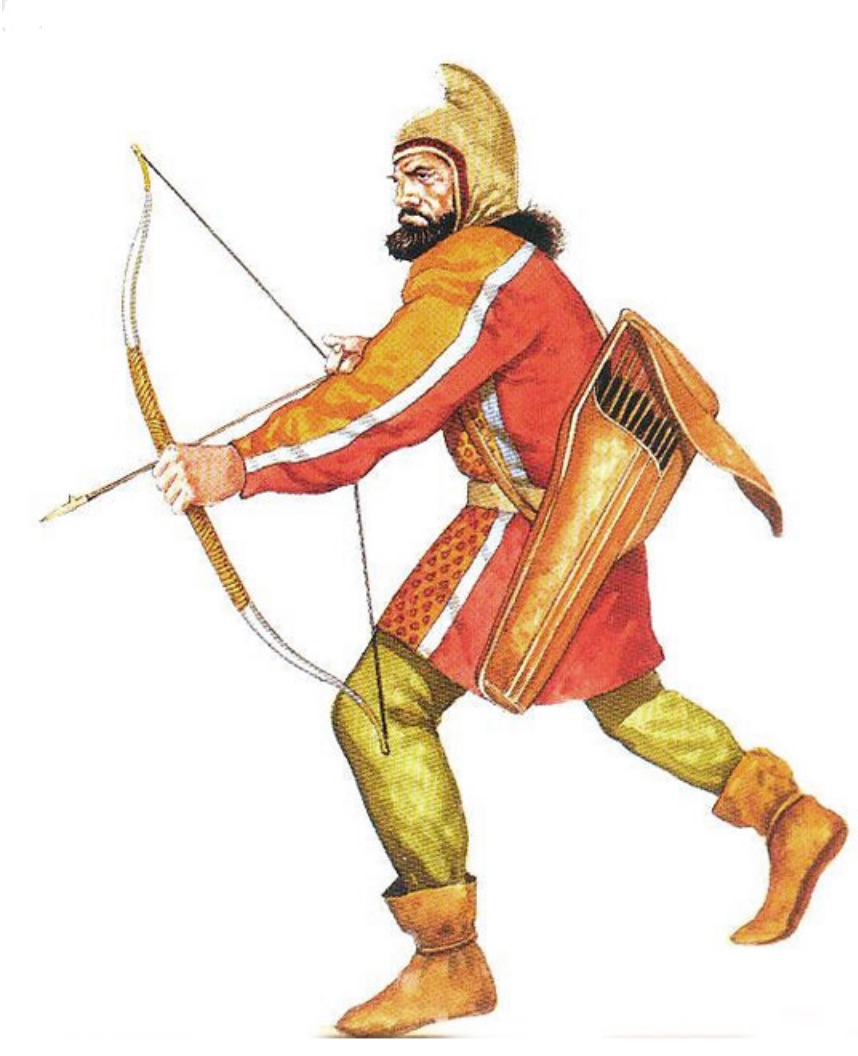
A Bactrian archer of the Achaemenid army (Source: Emma Walett in Pinterest).
Only skilled professionals could manufacture high-quality arrowheads. Toward the end of the 10th century, Moqaddasi mentioned that the Chorasmians supplied Khorasan with arrows (noššāb) that they in turn had acquired from the Bolḡār, a Turkic people at the Volga (BGA III, pp. 324-25; cf. Barthold, Turkestan, p. 235). In medieval sources, written in Persian and Turkic languages, arrows and bows are frequently mentioned, though the authors rarely provide specific details. For example, Ẓahir-al-Din Moḥammad Bābor (d. 1530) observed that the Timurid ruler Aḥmad Mirzā ; (r. 1452-69):
“… was a good bowman and never missed ducks with either arrows or forked arrows” (Bābor-nāma, p. 19a).
In the 17th and 18th centuries, the production of bows and arrows was consistently contracting because of the wider use spread of hand firearms.
Bibliography
- Bopearachchi and A. Ur Rahman, Pre-Kushana Coins in Pakistan, Karachi, 1997.
- Cleuziou, “Les pointes de flèche ‘scythiques’ en proche et moyen Orient,” in Le plateau iranien et l’Asie centrale dès origines à la conquête islamique: Leur relations à la lumière des documents archéologiques, Paris, 1977, pp. 187-99.
Idem, “Copper Arrowheads Typology and Chronology,” in The Archaeological Map of the Murghab Delta: Preliminary Reports 1990-95, ed. A. Gubaev, G. Koshelenko, and M. Tosi, Rome, 1998, pp. 119-21.
- M. Girs, Bakhram-Gur i nevol’nitsa: K voprosu o sasanidsskoǐ traditsii v persidskom iskusstive (Bahrām Gur and a woman slave: On a Sasanian tradition in Persian art), Izvestiya Gosudarstvennoǐ Akademii istorii material’noǐ kultury 5, n.p., 1927.
- Grenet, J.-C. Liger, and R. de Valence, “L’arsenal,” Bulletin de l’École française d’éxtrême orient 68, 1980, pp. 51-63.
- E. Klopsteg, Turkish Archery and the Composition Bow: A Review of an Old Chapter in the Chronicles of Archery and a Modern Interpretation, 2nd ed., Evanston, 1947.
- A. Litvinsky, Drevnie kochevniki ‘Kryshi Mira’” (Ancient nomads of the “Roof of the World”), Moscow, 1972.
Idem, Khram Oksa v Baktrii (Yuzhnyǐ Tadzhikistan):II – Baktriǐskoe vooruzhenie v drevnevostochnom i grecheskom kontekste (The temple of the Oxus (southern Tajikistan: II – Bactrian arm and armour in the ancient eastern and Greek context), Moscow, 2001.
- A. Livshits, Yuridicheskie dokumenty i pis’ma (Legal documents and letters), Sogdiǐskie dokumenty s gory Mug, vol. II, Moscow, 1962.
- W. Malandra, “On Glossary of Terms for Weapons and Armor in Old Iranian,” Indo-Iranian Journal 15, 1973, pp. 264-89.
- Mitchiner, “The Apogee of the Indo-Greeks, circa 160 to 120 B.C.,” in Indo-Greek and Indo-Scythian Coinage, vol. II, London, 1975, pp. 103-52.
- A. Smith, Catalogue of the Coins in the Indian Museum of Calcutta, Including of the Cabinet of the Asiatic Society of Bengal, Vol. I-, Oxford, 1906-.
- Tafazzoli, “A List of Terms for Weapons and Armor in Western Middle Iranian,” Silk Road Art and Archaeology 3, 1994, pp. 187-98.
- G. Vorob’eva, Dingil’dje: Usad’ba I tysyacheletiya do n.è. v drevnem Khorezme (Dingil’dje.: Estate of the first millennium BCE in ancient Chorasmia), Moscow, 1973.
- B. Whitehead, Catalogue of Coins in the Punjab Museum, Lahore, Oxford, 1914; repr. Chicago, 1969.
- N. Yagodin, “Bronzovye nakonechniki strel iz Yuzhnoǐ Baktrii” (Bronze arrowheads from southern Bactria), Drevnyaya Baktria 3, 1984, pp. 33-57.



